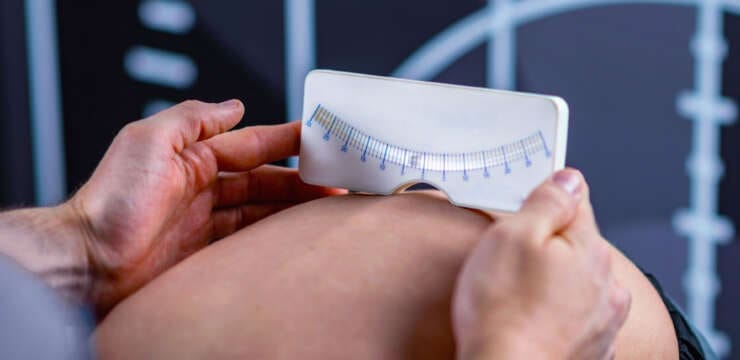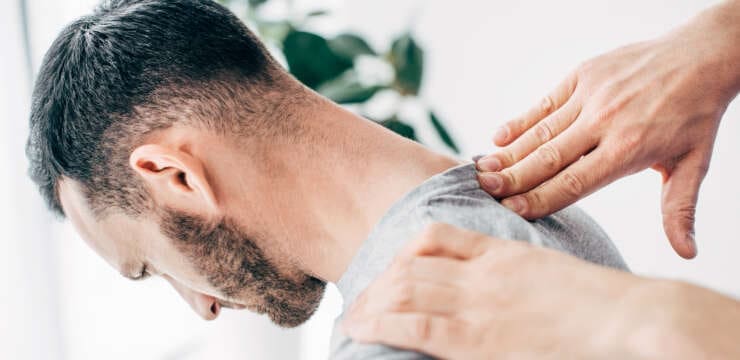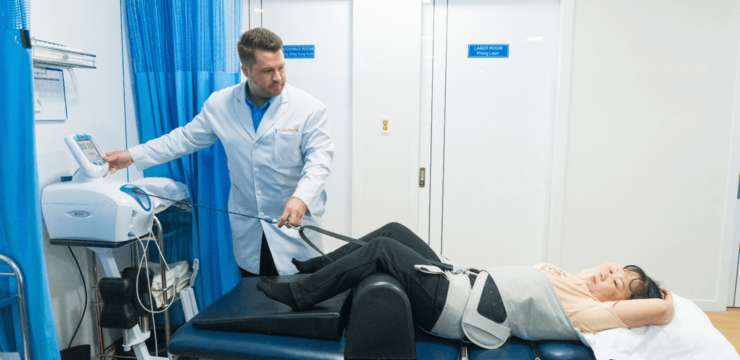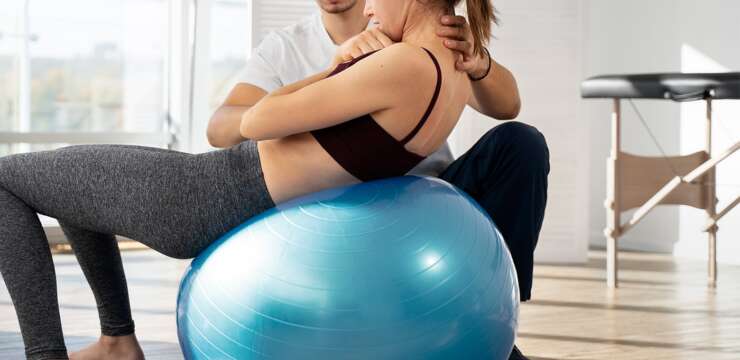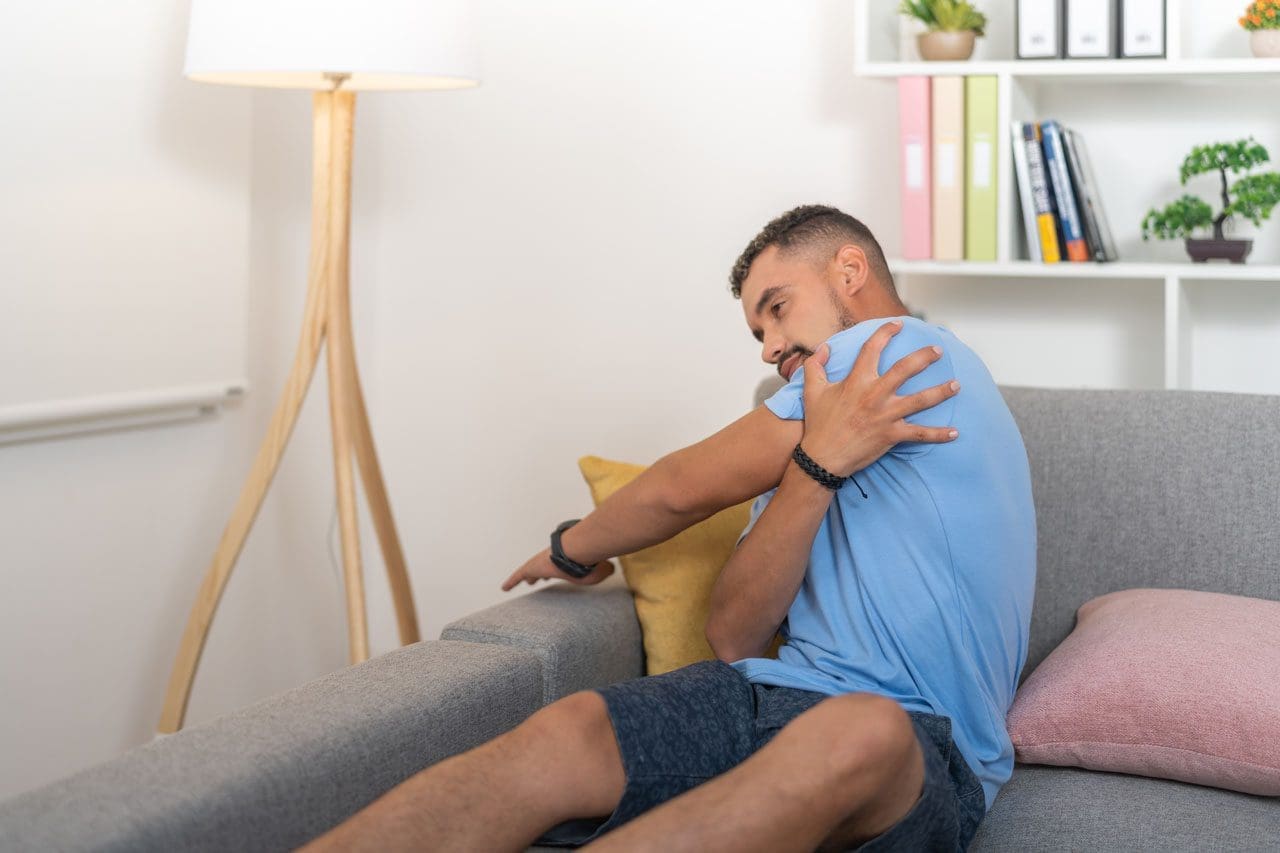
“Ankylosing spondylitis is inflammatory arthritis that causes changes in posture that occur over time. Can exercise and maintaining spinal alignment help improve posture problems?”
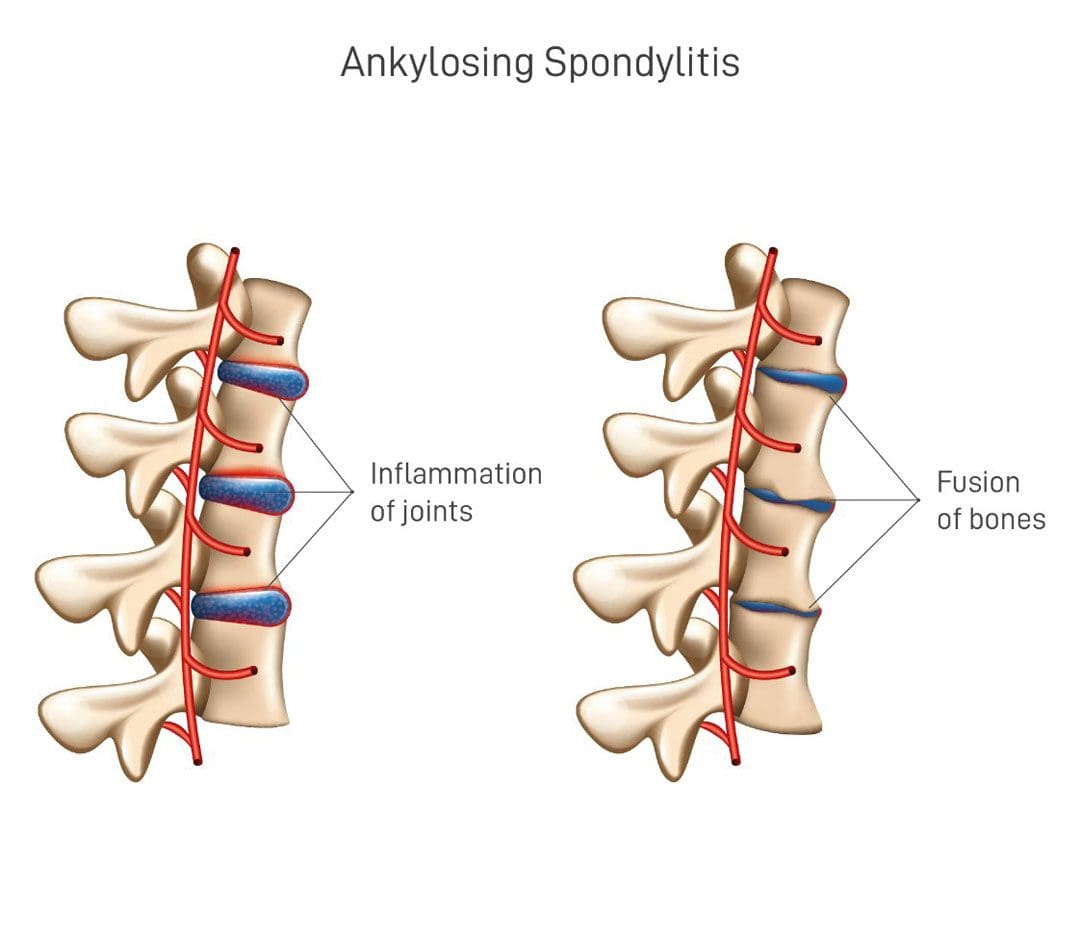
Table of Contents
Ankylosing Spondylitis Posture Improvement
Ankylosing spondylitis/AS is an autoimmune arthritis that primarily affects the spine. It can also spread to other joints of the body and affect the internal organs. Back pain problems are a common side effect of the condition and depending on the severity of damage to the spine, it can have a serious impact on posture.
Affects Posture
The condition usually first affects the sacroiliac joints at the bottom of the spine where they attach to the pelvis. As the condition progresses it works its way to the upper spine. The spine consists of 26 vertebrae/bones stacked on top of each other.
- Ankylosing spondylitis can cause the bones to fuse together. (National Institute of Arthritis and Musculoskeletal and Skin Diseases. 2023)
- The condition causes kyphotic deformity – rounding of the upper back, and the lower back flattening.
- As the disease progresses, the spine becomes immobilized in a stooped-over position and causes significant difficulty with daily tasks.
- A stooped posture can place pressure on the internal organs and lead to breathing difficulties.
- The condition leads to balance problems which increases the risk of falls. (Alessandro Marco De Nunzio, et al., 2015)
Posture Improvement Tips
Standing and Walking
When standing or walking try to remember to:
- Maintain a straight spine.
- Line up the ears, shoulders, hips, knees, and ankles in a straight line.
- Squeeze the shoulder blades together and down toward the back pockets.
- Relax the arms at the sides.
- Look straight ahead.
- Tuck the chin back slightly.
Sitting
The natural curves of the spine need support for proper posture when sitting. Try these tips when at a desk or at a table:
- Position the height of the chair so the hips and knees are bent at 90-degree angles.
- Place the feet flat on the floor or use a footstool based on chair height.
- Place a lumbar support pillow or rolled-up towel behind the lower back.
- Position the screen monitor at eye level to keep the upper back straight.
- Keep the keyboard and mouse close to the body to prevent overreaching which can increase the rounding of the shoulders and upper back.
Lying Down
Ankylosing spondylitis can make lying down uncomfortable. To support the spine while lying down try to:
- Sleep on a semi-firm mattress or type like memory foam to conform to the body.
- Place a pillow between the knees to maintain a straight spine when lying on the side.
- Use a specialized pillow to prevent placing the upper back in a rounded position.
Posture Exercises
For individuals with ankylosing spondylitis stretching and strengthening exercises can help improve body posture. Individuals are recommended to talk to their healthcare provider before beginning an exercise program.
Chin Tucks
- Sit up straight.
- Squeeze the shoulder blades together.
- Rest the arms at your sides.
- Look straight ahead, pull the chin back and in until the stretch is felt along the muscles of the neck.
- Hold for three to five seconds and relax.
- Repeat 10 times.
Corner Stretch
- Stand facing a corner.
- Raise the arms to shoulder height.
- Place one forearm flat against each wall.
- Stagger the feet.
- Slowly shift weight over the front leg and lean in toward the corner.
- Stop once the stretch is felt across the chest.
- Hold for 10 to 20 seconds and relax.
- Repeat three times.
Scapular Squeezes
- Sit up straight with arms resting at the sides.
- Squeeze the shoulder blades together like they are holding an object between them.
- Hold for three seconds and relax.
- Repeat 10 times.
Maintaining spinal alignment will help decrease back pain that occurs with AS.
- Targeted exercises can help stretch tight muscles and strengthen the muscles responsible for maintaining spinal alignment.
- Maintaining healthy posture when sitting, standing, and sleeping can help prevent deformities in the spine.
- Regular physical activity can help combat stiffness and help maintain overall strength.
For an individualized exercise program, see a physical therapist or chiropractor on incorporating posture exercises to help prevent complications from developing.
Arthritis
References
National Institute of Arthritis and Musculoskeletal and Skin Diseases. Ankylosing spondylitis.
De Nunzio, A. M., Iervolino, S., Zincarelli, C., Di Gioia, L., Rengo, G., Multari, V., Peluso, R., Di Minno, M. N., & Pappone, N. (2015). Ankylosing spondylitis and posture control: the role of visual input. BioMed research international, 2015, 948674. doi.org/10.1155/2015/948674
Disclaimers
Professional Scope of Practice *
The information herein on "Exercising for Ankylosing Spondylitis: Improve Posture" is not intended to replace a one-on-one relationship with a qualified health care professional or licensed physician and is not medical advice. We encourage you to make healthcare decisions based on your research and partnership with a qualified healthcare professional.
Blog Information & Scope Discussions
Welcome to El Paso's wellness blog, where Dr. Alex Jimenez, DC, FNP-C, a board-certified Family Practice Nurse Practitioner (FNP-C) and Chiropractor (DC), presents insights on how our team is dedicated to holistic healing and personalized care. Our practice aligns with evidence-based treatment protocols inspired by integrative medicine principles, similar to those found on dralexjimenez.com, focusing on restoring health naturally for patients of all ages.
Our areas of chiropractic practice include Wellness & Nutrition, Chronic Pain, Personal Injury, Auto Accident Care, Work Injuries, Back Injury, Low Back Pain, Neck Pain, Migraine Headaches, Sports Injuries, Severe Sciatica, Scoliosis, Complex Herniated Discs, Fibromyalgia, Chronic Pain, Complex Injuries, Stress Management, Functional Medicine Treatments, and in-scope care protocols.
Our information scope is limited to chiropractic, musculoskeletal, physical medicine, wellness, contributing etiological viscerosomatic disturbances within clinical presentations, associated somato-visceral reflex clinical dynamics, subluxation complexes, sensitive health issues, and functional medicine articles, topics, and discussions.
We provide and present clinical collaboration with specialists from various disciplines. Each specialist is governed by their professional scope of practice and their jurisdiction of licensure. We use functional health & wellness protocols to treat and support care for the injuries or disorders of the musculoskeletal system.
Our videos, posts, topics, subjects, and insights cover clinical matters, issues, and topics that relate to and directly or indirectly support our clinical scope of practice.*
Our office has reasonably attempted to provide supportive citations and has identified the relevant research studies or studies supporting our posts. We provide copies of supporting research studies available to regulatory boards and the public upon request.
We understand that we cover matters that require an additional explanation of how they may assist in a particular care plan or treatment protocol; therefore, to discuss the subject matter above further, please feel free to ask Dr. Alex Jimenez, DC, APRN, FNP-BC, or contact us at 915-850-0900.
We are here to help you and your family.
Blessings
Dr. Alex Jimenez DC, MSACP, APRN, FNP-BC*, CCST, IFMCP, CFMP, ATN
email: coach@elpasofunctionalmedicine.com
Licensed as a Doctor of Chiropractic (DC) in Texas & New Mexico*
Texas DC License # TX5807
New Mexico DC License # NM-DC2182
Licensed as a Registered Nurse (RN*) in Texas & Multistate
Texas RN License # 1191402
ANCC FNP-BC: Board Certified Nurse Practitioner*
Compact Status: Multi-State License: Authorized to Practice in 40 States*
Graduate with Honors: ICHS: MSN-FNP (Family Nurse Practitioner Program)
Degree Granted. Master's in Family Practice MSN Diploma (Cum Laude)
Dr. Alex Jimenez, DC, APRN, FNP-BC*, CFMP, IFMCP, ATN, CCST
My Digital Business Card


